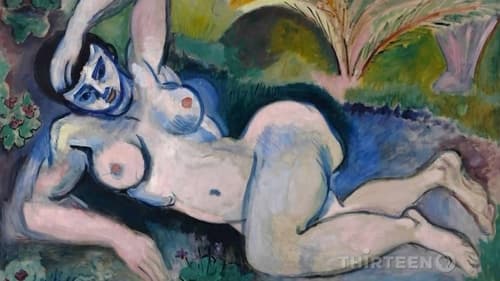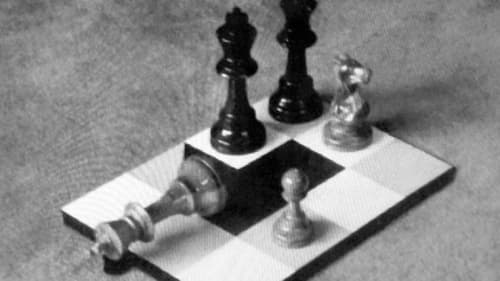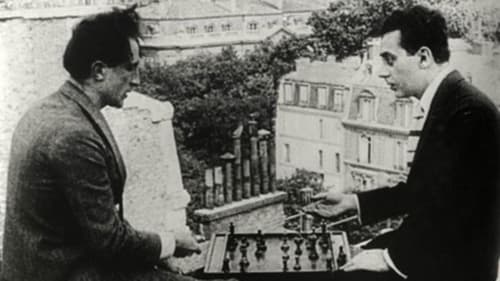
Marcel Duchamp
Nascimento : 1887-07-27, Blainville-Crevon, Normandy, France
Morte : 1968-10-02
História
Henri-Robert-Marcel Duchamp was a French, naturalized American painter, sculptor, chess player and writer whose work is associated with Cubism, conceptual art and Dada, although he was careful about his use of the term Dada and was not directly associated with Dada groups. Duchamp is commonly regarded, along with Pablo Picasso and Henri Matisse, as one of the three artists who helped to define the revolutionary developments in the plastic arts in the opening decades of the twentieth century, responsible for significant developments in painting and sculpture. Duchamp has had an immense impact on twentieth-century and twenty first-century art. By World War I, he had rejected the work of many of his fellow artists (like Henri Matisse) as "retinal" art, intended only to please the eye. Instead, Duchamp wanted to use art to serve the mind. He is considered by many critics to be one of the most important artists of the 20th century, and his output influenced the development of post–World War I Western art. He challenged conventional thought about artistic processes and rejected the emerging art market, through subversive anti-art. He famously dubbed a urinal art and named it Fountain.

Self - Artist (archive footage)
A remarkable walk through the life and work of the French artist Marcel Duchamp (1887-1968), one of the most important creators of the 20th century, revolutionary of arts, aesthetics and pop culture.

Uma tempestade de modernismo se distendeu pelo mundo da arte Ocidental nas primeiras décadas do século XX, apagando séculos de tradição nas artes visuais, música, literatura, dança, teatro e muito mais. O epicentro desta tempestade foi Paris. Neste incandescente momento, de 1905 a 1930, Paris era o centro magnético da inovação radical e da experimentação, a Meca dos talentos criativos de Michigan a Moscou, do Brooklin a Barcelona, que mudaria o curso da arte em todo o mundo ocidental. Momentos dramáticos e históricos são relembrados pelos participantes destes eventos lendários: Marc Chagall, Igor Stravinsky, Jean Cocteau, Aaron Copland, Marcel Duchamp, Sylvia Beach, Janet Flanner e muito mais. Este documentário conta a história épica de Paris de um ponto de vista inédito, não como uma cidade glamourosa, mas como protagonista ativa, catalisadora e parteira da modernidade.

Three-part, three-hour documentary with interviews about Marcel Duchamp.

Merce by Merce by Paik is a two-part tribute to choreographer Merce Cunningham and artist Marcel Duchamp. The first section, “Blue Studio: Five Segments”, is a work of video-dance produced by Merce Cunningham and videomaker Charles Atlas. The second part, produced by Paik and Shigeko Kubota, further queries the relationship between everyday gestures and formal notions of dance.
![Screen Test [ST80]: Marcel Duchamp](/assets/images/no-backdrop.png)
Himself
Marcel Duchamp alternates between scrutinizing the camera, and smiling and nodding in response to what seems to be a large crowd of off-screen admirers trying to get his attention. Occasionally he puts his fingers to his lips, indicating that he is not supposed to talk.

Self
The films were made between 1964 and 1966 at Warhol's Factory studio in New York City. Subjects were captured in stark relief by a strong key light, and filmed by Warhol with his stationary 16mm Bolex camera on silent, black and white, 100-foot rolls of film at 24 frames per second. The resulting two-and-a-half-minute film reels were then screened in 'slow motion' at 16 frames per second.

(archive footage)
A short film containing a collection of clips from various Hollywood movies.

Himself
Marcel Duchamp and French director Jean-Marie Drot discuss life, art, and chess.

Self / Voiceover
Free-associative images are juxtaposed with disorienting poetry in Richter's late work. The film is visual dynamite: Upside-down and reversed footage, play with shadows and light, billiards and dice and balloons-- suggestive and surreal images. Tenets of Dada writing, such as games of chance, punnery, wordplay and loud nonsense noise are foist upon the viewer as Dada poems are read / performed by their orignal authors.

Poem
Free-associative images are juxtaposed with disorienting poetry in Richter's late work. The film is visual dynamite: Upside-down and reversed footage, play with shadows and light, billiards and dice and balloons-- suggestive and surreal images. Tenets of Dada writing, such as games of chance, punnery, wordplay and loud nonsense noise are foist upon the viewer as Dada poems are read / performed by their orignal authors.

Co-Director
8 x 8: A Chess-Sonata in 8 Movements is an American experimental film directed by Hans Richter, Marcel Duchamp, and Jean Cocteau. Described by Richter as "part Freud, part Lewis Carroll" and filmed partially on the lawn of Duchamp's summer house in Southbury, Connecticut.

8 x 8: A Chess-Sonata in 8 Movements is an American experimental film directed by Hans Richter, Marcel Duchamp, and Jean Cocteau. Described by Richter as "part Freud, part Lewis Carroll" and filmed partially on the lawn of Duchamp's summer house in Southbury, Connecticut.

Filmed amidst the Arensberg collection at the Philadelphia Museum of Art, where 35 works by Marcel Duchamp are gathered, this 1956 NBC interview features the artist talking with James Johnson Sweeney, former director of the Guggenheim Museum. Duchamp describes his transition away from Impressionism toward a Cubist, and then post-Cubist, approach, providing commentary while standing before Nude Descending a Staircase

The artist
Witch’s Cradle is an unfinished Maya Deren film made in the Guggenheim Gallery during a surrealist “Art of this Century” exhibit. It was assembled long after her death by staffers within the preservation department at Anthology Film Archives.

Idea
A spiral design spins. It's replaced by a spinning disk. These two continue in perfect alternation until the end: a spiral design, a disk. Each disk is labelled and can be read as it rotates. The messages, in French, feature puns and whimsical rhymes and alliteration. The final message comments on the spiral motif itself.

Director
A spiral design spins. It's replaced by a spinning disk. These two continue in perfect alternation until the end: a spiral design, a disk. Each disk is labelled and can be read as it rotates. The messages, in French, feature puns and whimsical rhymes and alliteration. The final message comments on the spiral motif itself.

Chess player, black set
Curta-metragem surrealista do cineasta francês René Clair

Wounded man
Leroy Trenchard loves Therese Verneuil, and when Leroy enters the army goes to France to fight, Therese follows as a Red Cross nurse. But suspicion arises that Therese is actually Princess Sonia, a German spy.






